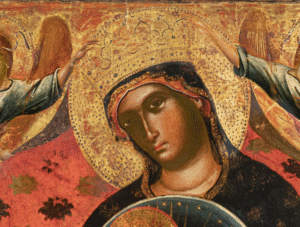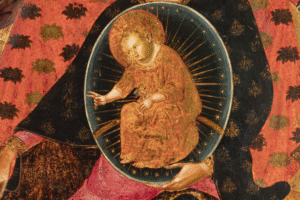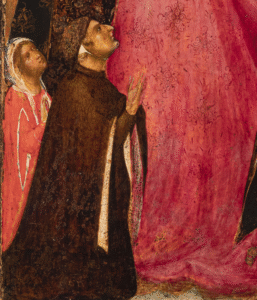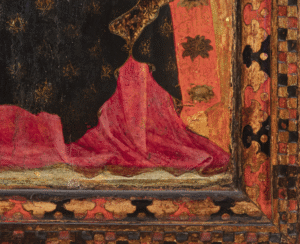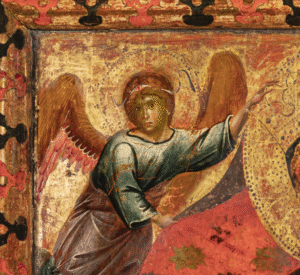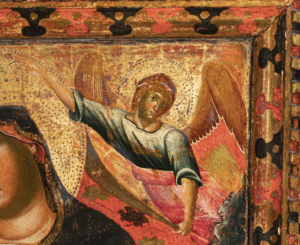
Paolo Veneziano, Madonna and Child Enthroned with Two Donors, 14th century
Gallerie dell'Accademia, Venice
Project:
Conservation of Paolo Veneziano's Madonna and Child Enthroned with Two Donors
Location:
Gallerie dell'Accademia
Start Date:
Spring 2026
End Date:
By end 2026
Funding:
€90,700
The Madonna and Child Enthroned with Two Donors was painted around 1330 by Paolo Veneziano, the foremost painter of fourteenth-century Venice. Of unknown provenance, the altarpiece is exceptional for its integrity, iconography and authorship, and numbers among the most important paintings in the collection of the Gallerie dell’Accademia.
Paolo Veneziano operated a successful family business, assisted by his sons Marco, Luca, and Giovanni, making altarpieces and other devotional paintings, and benefitting from official and private commissions in Venice, her territories, and the wider Adriatic area. Paolo’s surviving oeuvre testifies to his engagement with the diverse cultural currents of his native city, as he combined the aesthetics and iconographies of Byzantine and western art. Indeed, this altarpiece exemplifies Paolo’s synthesis of Byzantine and western iconographies, conflating the Greek Virgin Platytera – in which the Infant appears within an almond-shaped clypeus – with the western Madonna della Misericordia, where the Virgin shelters her devotees beneath her mantle. Here, the Virgin is enthroned in majesty, while the Infant extends a gesture of blessing towards a young couple, who may be invoking the Virgin’s intercession for a successful pregnancy. The presence of the donor couple and the likely votive context, is an exceptional and important feature in a Venetian painting of the period. The panel is also extraordinary for the retention of its original polychrome frame decorated with dentil moulding in alternating colours of red, blue, and gold, as well as the integrity of the structure of its reverse.
The intervention will first entail a diagnostics campaign, conducted by the scientific laboratory of the Gallerie dell’Accademia, and a thorough study and documentation of the panel’s original structure which will guide the development of a secure, stress-free display and support system. The reverse of the panel will be cleaned to remove dust and reduce humidity-related staining. Once areas of weakness have been stabilised and secured, cleaning will be undertaken with meticulous care under continuous stereomicroscopic observation. Conservators will proceed gradually to remove surface deposits, aged varnishes, previous retouching and overpainting, and unsuitable fills. Particular attention will be paid to the gilded sections and to the panel edges, which preserve traces of a dark red pigment layer. Intermediate varnish layers will be applied to restore optical balance and to isolate new fills and inpainting, all executed in accordance with conservation standards and using reversible methods. The treatment will conclude with the application of a final protective varnish.
The intervention will cost € 90,700.

